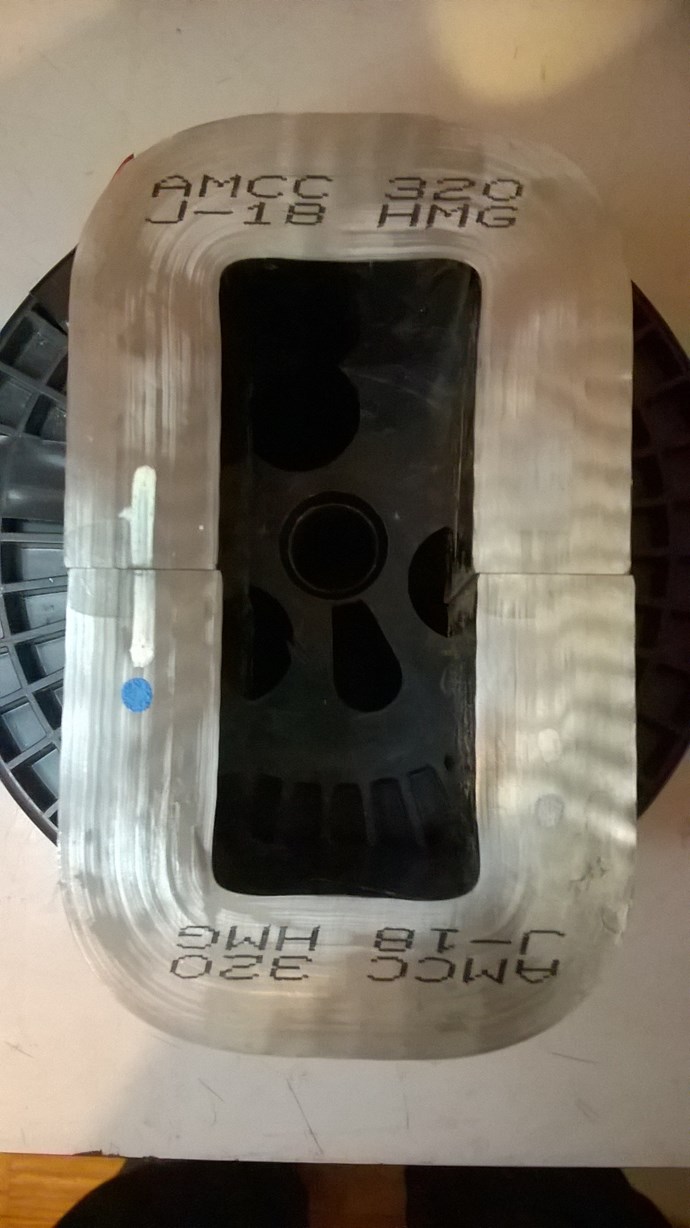I replaced the dead Cree MOSFET from my MOSFET driver and removed the diodes which caused problems and provoked damages:
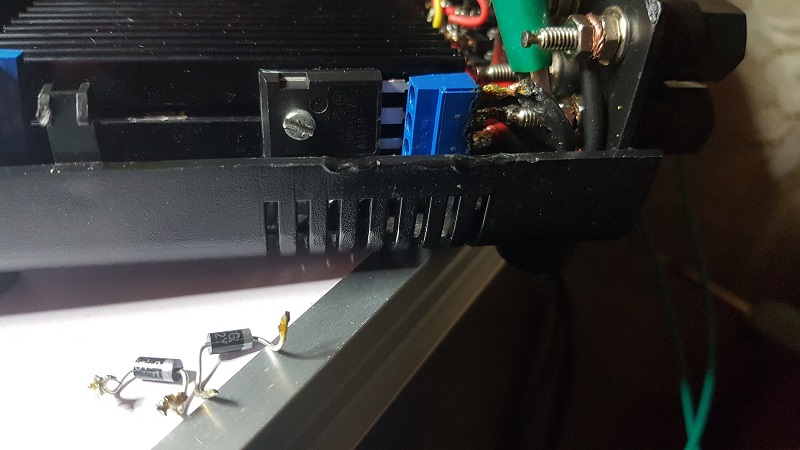
Unfortunately this new MOSFET had a short life, I had an experiment where I tried to use a choke-coil to smooth the voltage produced by a 10A/75mV (0.0075 Ohm) current-sensing shunt on the input.
I learned a lesson, choke-coils provoke damages if they are placed anywhere in the circuit. The choke-coil made the DC source enter in auto-protection, burned the new Cree MOSFET and also destroyed the last 12V/55W light-bulb I had:
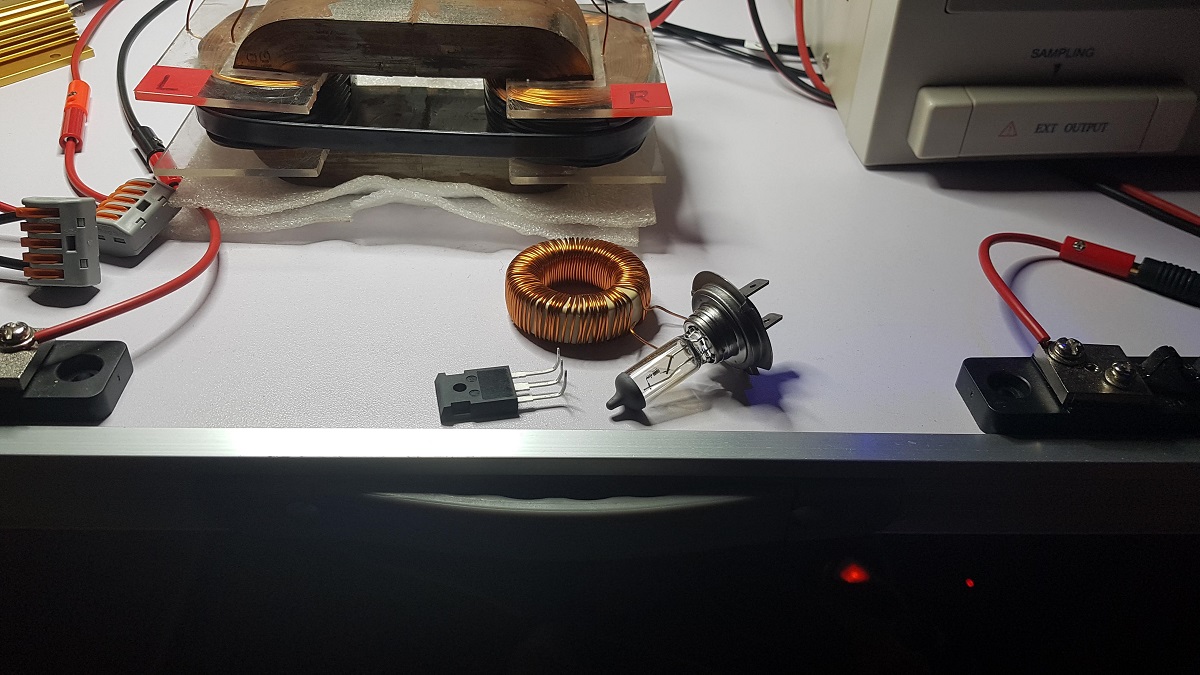
I remember I had similar damages before when i tried to use choke-coil put on DC source's output trying to smooth the noise/spikes coming back from ZPM.
So right now I'll need to order some new 12V/55W light-bulbs and as the last Cree MOSFET is already placed in the MOSFET driver probably I should order some new Cree MOSFETs too.
Until then I still have some halogen light-bulbs, I'm gonna use 2 x 12V/35W on output.
The goal of the choke-coil experiment was a first step in the process of building a real-time current and voltage sensor on input and output without oscilloscope, using just some 10A/75mV current-sensing shunts.
As this one experiment failed I changed the approach: what about using (for the beginning) some LEDs as visual indicators of the current passing through the shunts ? Of course that's not a precise measurement but the LEDs could provide at least a clue of what's going on with the current on input and output in real-time while experimenting with different parameters on the signal generator. A next step would be, if I succeed in rectifying the voltage provided by those shunts, to place digital voltmeters measuring in real-time the voltage provided by the shunts so actually providing in real-time the accurate current measurements on input and output.
So for this first step (LEDs as visual indicators for current) I took two identical LEDs from two identical Chinese lighters where those LEDs are powered by 3 x SR626SW (1.55V) batteries:
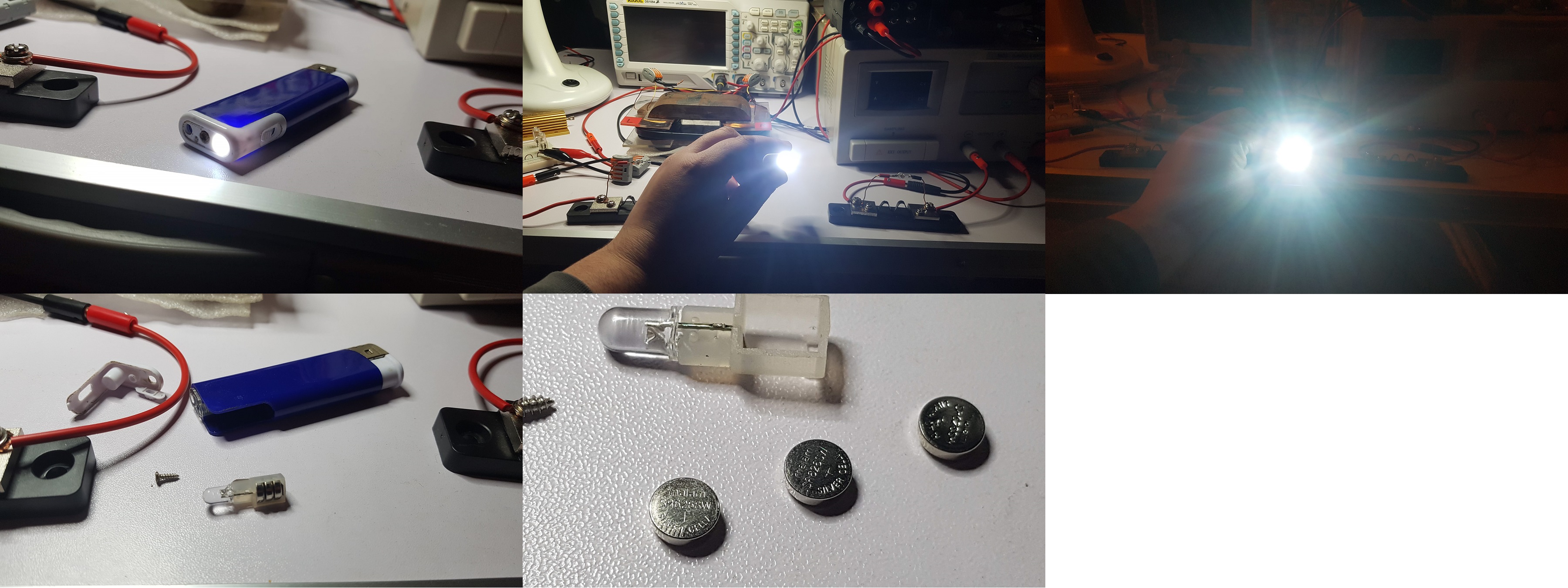
So this is the result:
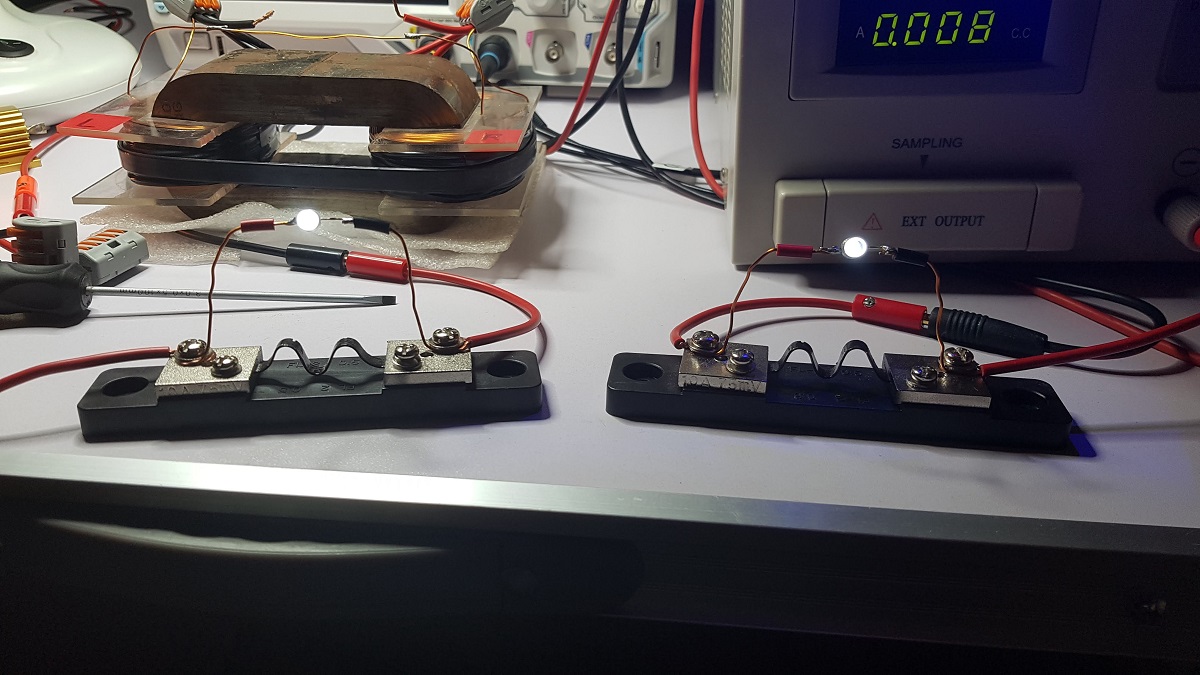
So for now I have some real-time visual indications on current values on input and output.
From now on I can experiment not only with frequency but also with AMP and duty-cycle on my signal generator and see what's going on with the current on input and output. In the following photos I tried changing these parameters. In reality the luminosity difference between the two LEDs is easy to observe but seems my phone is amplifying low luminosity sources and dime high luminosity sources when taking photos in dark. But still you can see these differences:
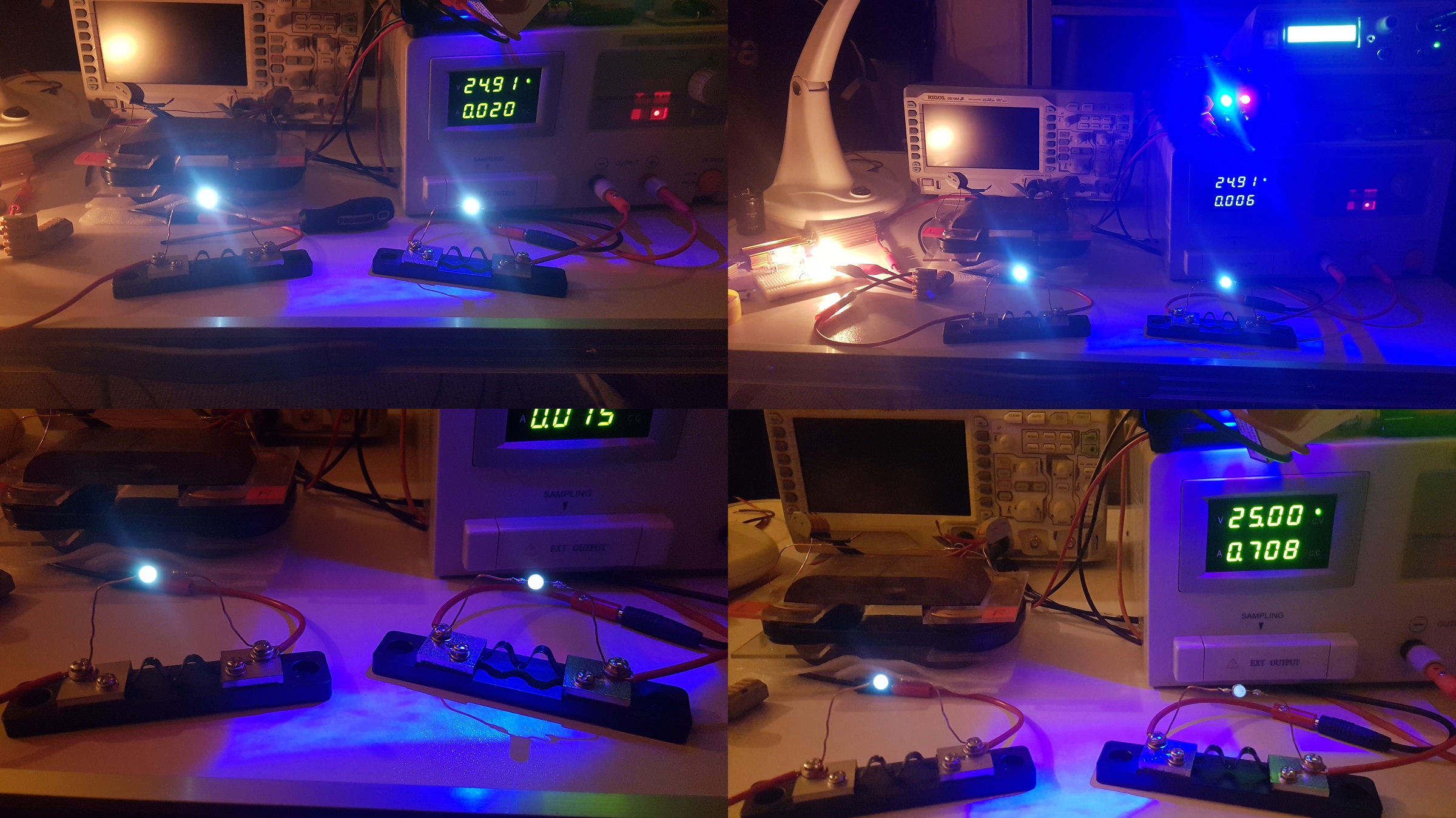
Just as a note: the current-sensing shunts are identical and the LEDs are identical in luminosity, I verified that by switching the shunts and LEDs between input and output and having the same results (in terms of LEDs luminosity). So I checked that both shunts and LEDs have the same characteristics.
And I took one photo which I think is very significant, I played with parameters in order to see if I can have the LED on input off while still having the LED on output on. In this photo you can see the current on input is clearly not enough to light that LED while on output you see the LED still on and also on the left 2 x 12V/35W halogen light-bulbs still on:
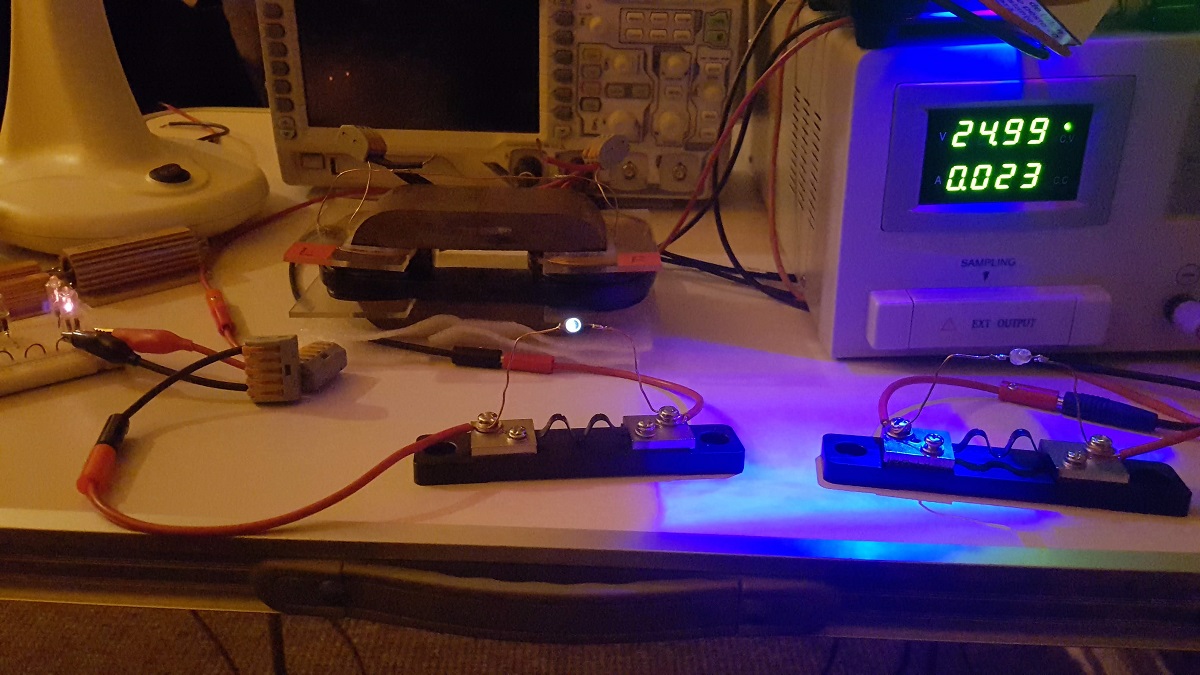
I am aware about the voltage differences between input and output but considering on input we have 25V and on output we have spikes between 100V and 200V in my opinion this image gives an additional clue about ZPM's over-unity.
The next goal in building this real-time measurement system is finding a way to smooth the voltage provided by the shunts so that voltage becomes DC:

If I can have clean DC voltage provided by the shunts then I can use it it with some digital voltmeters I just bought so I can have accurate real-time digital display of currents on input and output.
So for now the problem is how I find a way to get DC from this but without choking-coils:
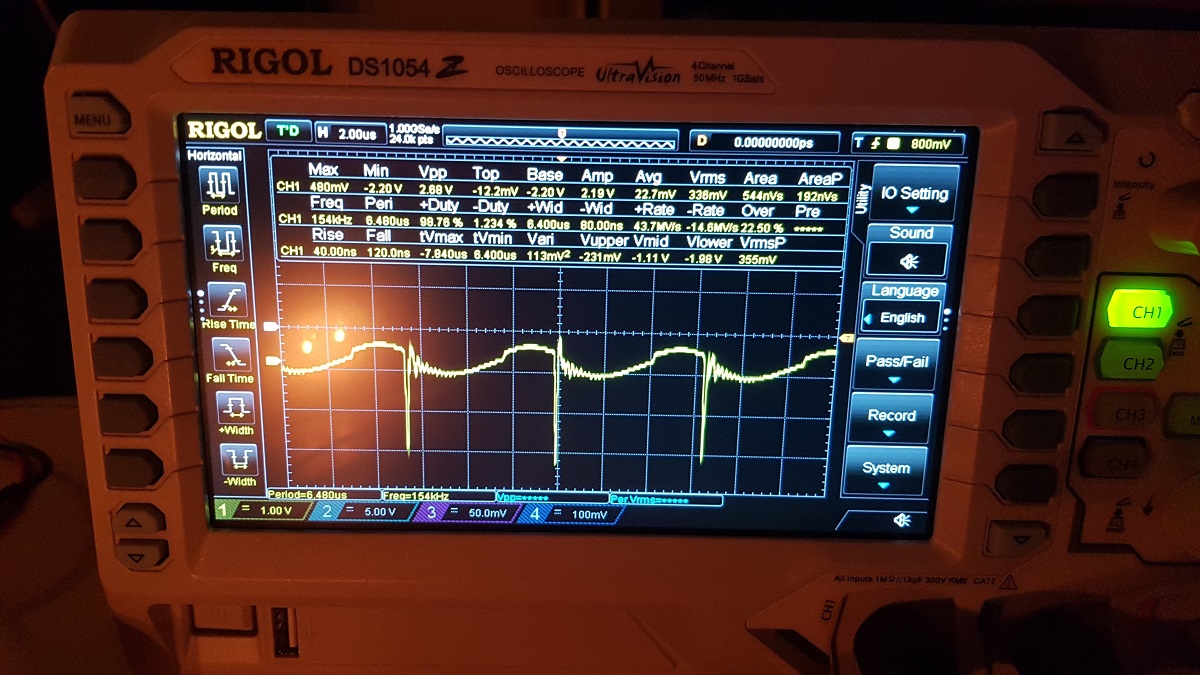
I'm thinking of building bridge-rectifiers using these SF28G super-fast diodes then maybe some capacitor(s) for smoothing the voltage. I'll see how it works.
I'll post updates as I find time to continue the experiments...
| "If you want to find the secrets of the universe, think in terms of
energy, frequency and
vibration." |
|
|
Nikola Tesla |











